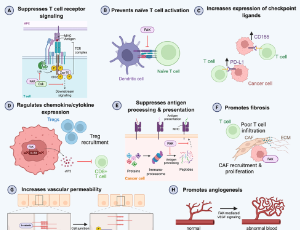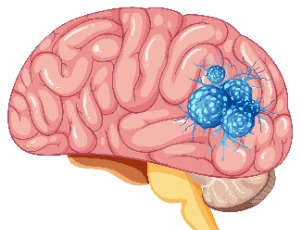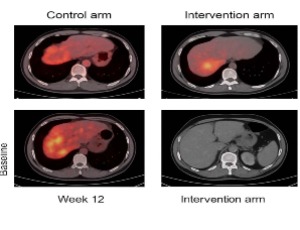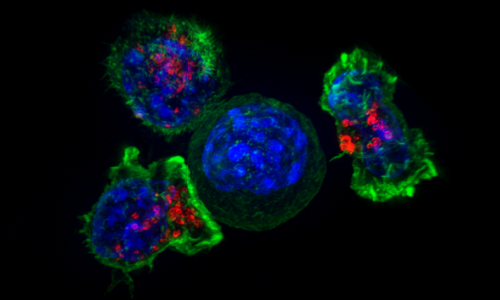Loading
Journal of Cancer Immunology
ISSN: 2689-968X
Latest Articles
Targeting FAK to Potentiate Immune Checkpoint Therapy in Solid Tumors
Karly A. Stanley , Sheri L. Holmen
The advent of immune checkpoint inhibition revolutionized cancer care, yet many people will fail to respond due to innate or acquired resistance. Combination therapies with immune checkpoint inhibitors are being explored to enhance their efficacy and improve patient outcomes. Focal adhesion kinase (FAK), known for its roles in cell adhesion and migration, has emerged as a potential therapeutic target due to the identification of its additional functions in cancer progression, including its ability to establish a pro-tumorigenic, immunosuppressive microenvironment.
J Cancer Immunol, 2025, Volume 7, Issue 3, p99-108 | DOI: 10.33696/cancerimmunol.7.109
Adherent Natural Killer Cells De Novo Express IL-2Rα and Sustain Long-Lasting, Potent Anti-Tumor Activity in Picomolar Concentrations of IL-2
Nikola L. Vujanovic , Lazar Vujanovic , Theresa L. Whiteside
Natural killer (NK) cells are innate lymphoid cells (ILCs) that play key roles in immunosurveillance and immunoregulation. They constitute a heterogeneous population comprising three principal subpopulations: NK1 (cytotoxic), NK2 (regulatory), and NK3 (adaptive). In response to interleukin-2 (IL-2) stimulation, NK3 cells differentiate into adherent NK (A-NK) cells, which exhibit potent anti-tumor activity. Human A-NK cells are generated by priming and adherence-based selection of peripheral blood NK3 cells in nanomolar (nM) IL-2 concentrations, followed by prolonged restimulation and culture in the same IL-2 conditions.
J Cancer Immunol, 2025, Volume 7, Issue 3, p109-122 | DOI: 10.33696/cancerimmunol.7.110
Blood Clotting Contributes to a Malignant Glioma Phenotype: A Commentary
Lynn M. Knowles , Tamara C. Kiwitt , Jan Pilch
High-grade gliomas are malignant brain tumors that are derived from glial progenitors, oligodendrocytes or astrocytes. The prognosis of malignant glioma is poor with an overall survival of 12-15 months for glioblastoma (GBM) and 2-5 years for anaplastic glioma. A hallmark of glioma is the diffuse infiltration of the neuropil, which regularly prevents complete surgical removal even in premalignant lesions. While gliomas are generally considered to be non-metastatic, they are able to activate transcriptional programs known to promote mesenchymal cell functions that are associated with increased tumor cell invasion, a high rate of proliferation and poor patient survival.
J Cancer Immunol, 2025, Volume 7, Issue 3, p123-127 | DOI: 10.33696/cancerimmunol.7.111
AminoTricomplex Therapy in Advanced Triple-Negative Breast Cancer: A Translational Study Linking Survivin Downregulation, Cystatin C Upregulation, and MT1 Receptor Re-Expression to Clinical Outcomes
Alexandre Tavartkiladze , Gaiane Simonia , Russel J Reiter , Ruite Lou , Nana Okrostsvaridze , Dinara Kasradze , Pati Revazishvili , Irine Andronikashvili , Pirdara Nozadze , Givi Tavartkiladze , Rusudan Khutsishvili , Tatia Potskhoraia
Breast cancer remains the most frequently diagnosed malignancy in women worldwide. TNBC—defined by the absence of estrogen receptor (ER), progesterone receptor (PR), and human epidermal growth factor receptor 2 (HER2)—comprises ~15–20% of cases and is disproportionately represented among younger women, women of African ancestry, and carriers of germline BRCA1 mutations.
J Cancer Immunol, 2025, Volume 7, Issue 3, p128-143 | DOI: 10.33696/cancerimmunol.7.112
Next-Generation Immune Checkpoint Inhibitors in Cancer: Mechanisms, Current Clinical Advances, and Future Directions
Tabish Hussain , Dhurjhoti Saha , Abhijit Chakraborty
The introduction of immune checkpoint inhibitors (ICIs) targeting cytotoxic T-lymphocyte–associated protein 4 (CTLA-4) and later programmed cell death protein 1 (PD-1) or its ligand (PD-L1) marked a turning point in cancer therapy. These agents validated the principle that durable tumor control can be achieved by releasing inhibitory pathways that restrain antitumor T cell responses. Long-term survival benefits in melanoma, non-small cell lung cancer, and other malignancies have established immunotherapy as a defining development in oncology.
J Cancer Immunol, 2025, Volume 7, Issue 3, p144-165 | DOI:
About Scientific Archives
Scientific Archives is a global publisher initiated with the mission of ensuring equal opportunity for accessing science to research community all over the world. Spreading research findings with great relevance to all channels without any barrier is our goal. We want to overcome the challenges of Open Access with ensured quality and transparency.

